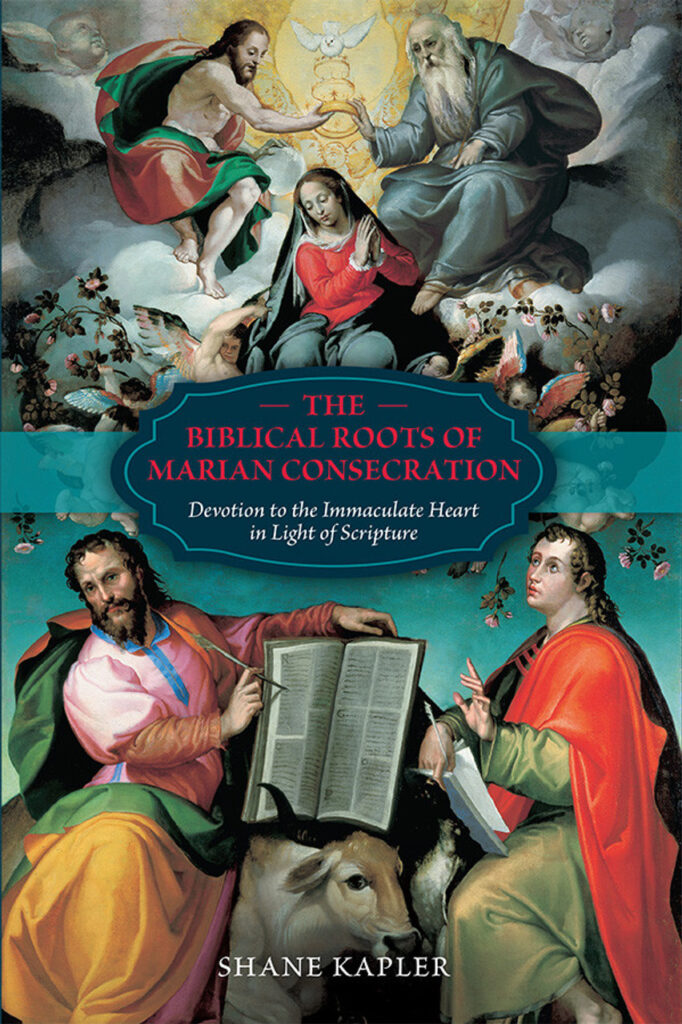On its face, the question sounds ridiculous. Anyone even vaguely familiar with the Brown Scapular of Our Lady of Mount Carmel knows that the small, woolen sacramental goes back to Carmelite St. Simon Stock’s vision of 1251 A.D. The earliest account, in the Carmelite Sanctoral, recorded how the Blessed Mother showed St. Simon the Scapular and made the promise that “He who dies in this will not suffer eternal fire.” (Some will liken the promise to magic or superstition, but the Church’s interpretation will be explained later.)
I readily acknowledge that the Brown Scapular will not be found in the pages of the Old or New Testaments. What we do find in both, however, are its material and spiritual precursors – images that show us how its wearing today is in complete harmony with the written Word of God.
In the Law of Moses, Jewish men were commanded to attach tzitzit, or tassels, to the edge of their garments. “It shall be to you a tassel to look upon and remember all the commandments of the Lord, to do them, not to follow after your own heart” (Num 15:37-39). They acted as tactile and visual reminders directing hearts to the Lord. In the New Testament we read of these tassels on Jesus’s garments, recognizing that both the garments and tassels would have been woven by His Blessed Mother. Earlier in life, Mary would have done the same for Joseph, and later in life for the Apostle John. We read how the sick were healed simply by reaching out in faith to touch the tassels on Jesus’s garments (Mt 14:36; Lk 8:43-48).
In the Acts of the Apostles, we read how the Lord continued to evoke people’s faith for the purpose of healing, not through tzitzit but other articles worn by the apostles. “Handkerchiefs or aprons were carried away from [Paul’s] body to the sick, and diseases left them and evil spirits came out of them” (Acts 19:11-12). The Church of today refers to such objects as sacramentals, explaining that they “do not confer the grace of the Holy Spirit in the way that the sacraments do, but by the Church’s prayer, they prepare us to receive grace and dispose us to cooperate with it” (CCC 1670). They do this by evoking our faith in God’s power.
In the vision granted to St. Simon Stock, the Church received a new sacramental. The Brown Scapular, originally an addition to the Carmelite Order’s religious habit, has been extended by the popes for use by all of the faithful. Like the tzitzit created and sewn by Mary to Christ’s garments – the sacramental that evoked faith and brought healing to the sick of Palestine – so we, Christ’s mystical Body, are now clothed in another garment stitched, so to speak, by Mary’s hands. And the Scapular has never been understood by the Carmelites or the Church’s theologians to be a talisman guaranteeing eternal life. Rather, as a sacramental, its wearing is a concrete expression of faith that Jesus has entrusted the wearer to Mary’s heart.
One cannot wear the Scapular and persist in sin, presuming upon God’s mercy (see Heb 6:4–9). Such a thought is abhorrent to the hearts of Jesus and Mary. A person, however, who wears the Scapular as a sign of his consecration to Jesus through the love and intercession of Mary’s immaculate heart—and perseveres in his discipleship, repenting when he falls—will receive the grace to die in the Lord’s friendship, and thus enter eternal life.
Wearing the scapular serves the same purpose as the tzitzit; it is a biblically-grounded reminder to follow Jesus and Mary in placing the Father’s divine will before that of our own human hearts (Nm 15:39; Mt 26:39; Lk 1:38). This is why the young visionaries at Fatima saw Mary extend the Brown Scapular. Our goal is to realize the full life of heaven, to love Christ with the Immaculate Heart of His mother. “Blessed are the pure [or ‘immaculate’] in heart, for they shall see God” (Mt 5:8).
Adapted from Shane Kapler’s The Biblical Roots of Marian Consecration: Devotion to the Immaculate
Heart in Light of Scripture (TAN Books, 2022).








